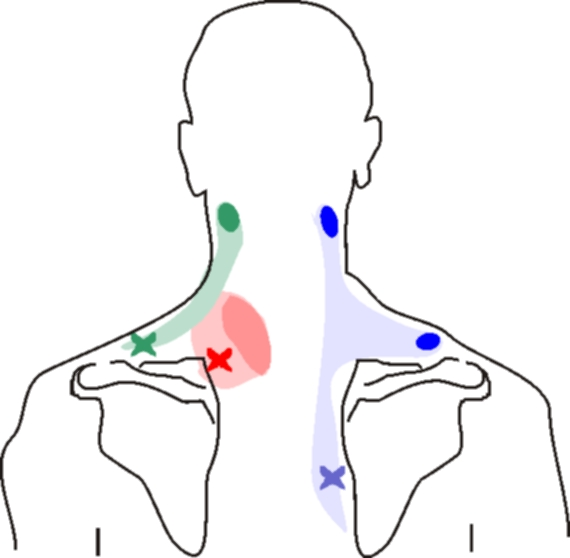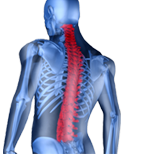Trigger Point Injection


Trigger point injection (TPI) is used to treat extremely painful areas of muscle. Normal muscle contracts and relaxes when it is active. A trigger point is a knot or tight, ropy band of muscle that forms when muscle fails to relax. The knot often can be felt under the skin and may twitch involuntarily when touched (called a jump sign). The trigger point can trap or irritate surrounding nerves and cause referred pain — pain felt in another part of the body. Scar tissue, loss of range of motion, and weakness may develop over time. TPI is used to alleviate myofascial pain syndrome (chronic pain involving tissue that surrounds muscle) that does not respond to other treatment, although there is some debate over its effectiveness. Many muscle groups, especially those in the arms, legs, lower back, and neck, are treated by this method. TPI also can be used to treat Fibromyalgia and tension headaches.
Procedure Overview
The procedure itself can be done in an office setting, or a pain clinic. The injections are limited to what is called the "soft tissue" of the body. They are not given into blood vessels, nerves, joints or the spinal canal. You may be sitting or lying down in order to be comfortable. This allows the physician to localize areas of maximum tenderness. These areas are cleansed with a sterile solution. The injection is then performed using local anesthetic and sometimes an anti-inflammatory steroid. You may experience some transient burning as the local anesthetic starts to take effect before it numbs the area. Injection of medication inactivates the trigger point and thus alleviates pain. Sustained relief usually is achieved with a brief course of treatment. Several sites may be injected in one visit.
Procedure Details
Will you be asleep for the procedure? It is not necessary for you to go to sleep for this procedure. About 1 ml of local anesthetic and sometimes a very small amount of steroid is mixed and injected into the muscle knot. This is performed in a few different spots where there are muscle knots or tender spots (Cervical, Thoracic or Lumbar). How long will the procedure take? Normally, a trigger point injection takes no more than 5 or 10 minutes.
Before the procedure
If you are a diabetic, be sure to discuss your eating and medication schedule with your doctor. Please remind the doctor of all prescription and over- the-counter medications you take, including herbal and vitamin supplements. The doctor will tell you if and when you need to discontinue the medications. It is very important to tell the doctor if you have asthma, had an allergic reaction (i.e. hives, itchiness, difficulty breathing, any treatment which required hospitalization) to the injected dye for a previous radiology exam (CT scan, angiogram, etc) or if you have had an allergic reaction to shellfish (shrimp, scallops, lobster, crab). The doctor may prescribe some medications for you to take before having the procedure. Tell the doctor if you develop a cold, fever, or flu symptoms before your scheduled appointment.
After the procedure
Icing for 20 to 30 minutes for a few times later on the day of the injection is recommended if you are sore, along with easy stretching exercises. You may return immediately to work or regular activities after the injection. You may drive, although some people feel less nervous if they know they have someone along to drive them home. You should continue any physical therapy sessions already scheduled. At times, the physician will specifically want to perform the injection on a day when you are scheduled for physical therapy. You may be sore for the first 24 to 48 hours. If any unusual redness or swelling or warmth occurs at the injection site, notify the physician who performed the trigger point injection. You may continue taking all of your regular medications. The doctor may prescribe some new medications to enhance the effectiveness of the injections.
Procedure Risks
The risks, although infrequent, include: Allergic reaction to the medication; Nerve damage; Bruising or infection at the injection site. If you experience severe pain or new numbness in the area of the injection, you should call the doctor right away.



